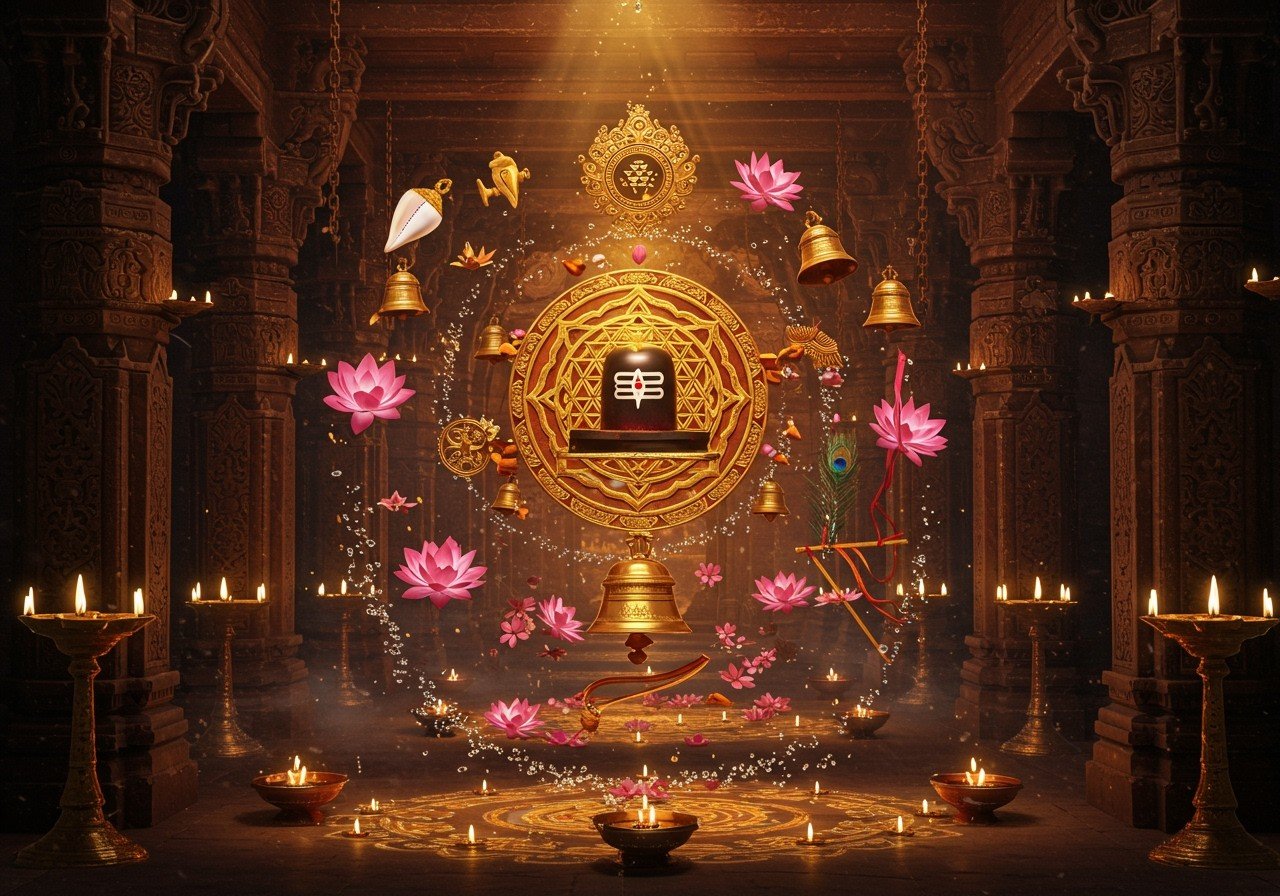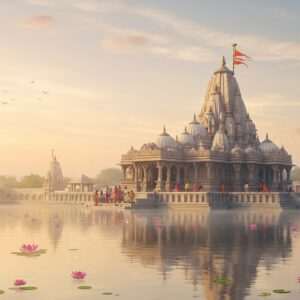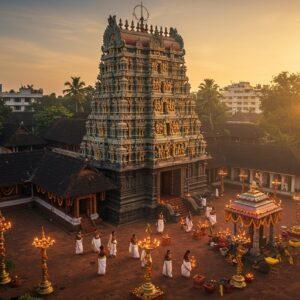
Temple art and iconography are integral to Indian culture, reflecting our rich spiritual heritage, historical narratives, and societal beliefs. They offer a captivating glimpse into the very essence of our traditions. Let’s delve into the profound world of temple art, exploring how these elements beautifully intertwine in the architecture and sculptures of temples, with a special focus on the Pavalavannam Temple.
Decoding the Symbolism in Temple Art
Temple art is replete with symbols, each carrying profound spiritual meaning. The lotus flower, a recurring motif in temple carvings, embodies purity and spiritual awakening, much like the unfolding of a soul on its spiritual path. Often placed at temple entrances, the kalasha, a pot filled with water, a coconut, and mango leaves, signifies abundance, prosperity, and the auspiciousness of new beginnings. Just as the kalasha overflows with blessings, so too does the temple offer spiritual nourishment.
Mythical creatures like the Makara, a unique blend of crocodile and elephant, stand guard over sacred spaces, protecting the sanctity within. They represent the confluence of earthly and aquatic realms, symbolizing the interconnectedness of all creation. The Nataraja, the divine dancer form of Lord Shiva, captures the eternal cycle of creation and destruction, reminding us of the constant flux of the universe. The towering gopurams, the temple gateways, are adorned with intricate carvings depicting stories from epics like the Ramayana, silently imparting moral lessons to all who pass through their arches. Yakshas and Yakshinis, benevolent nature spirits, are revered as protectors of wealth and natural resources, embodying the harmony between humans and the natural world.
Animal motifs also play a significant role. Elephants symbolize strength and wisdom, lions represent courage and regal power, and peacocks embody grace and beauty. These symbols weave together a rich tapestry of meaning, enriching the spiritual experience within the temple walls.
Gomti Chakras are also significant in many temples, representing prosperity and good fortune.
The Exquisite Sculptures of Pavalavannam Temple
The Pavalavannam Temple stands as a testament to the exquisite artistry of temple sculpture, reflecting the religious and cultural ethos of the region. The main deity is often portrayed in a joyful dance, symbolizing the rhythmic cycles of the universe, reminding us of the continuous dance of creation. The graceful Apsaras, celestial beings, adorn the temple walls, underscoring the sacred role of music and dance in spiritual life. Their presence evokes a sense of divine harmony and elevates the temple’s aesthetic appeal.
The temple walls are adorned with narrative panels depicting the lives of saints and sages, offering timeless ethical teachings and inspiring devotees to lead virtuous lives. Deities with multiple arms and heads signify their divine powers and multifaceted responsibilities, showcasing their ability to manage the complexities of the cosmos. Pillars intricately carved with flora and fauna depict the harmonious coexistence of nature and spirituality. The decorative friezes capture the vibrancy of temple processions and festivals, highlighting the temple’s role as a vital hub of community life. Even the choice of materials – granite and sandstone – holds symbolic meaning, representing strength, permanence, and connection to the earth.
Explore our collection of Brass Hanuman Statues and Brass Ganesha Statues, crafted with the same reverence and attention to detail as traditional temple sculptures.
Interpreting Temple Iconography
Understanding temple iconography requires a keen eye for detail and an appreciation for the cultural and historical context. Mudras, the specific hand gestures of deities, convey specific messages. A raised hand might signify fearlessness, while another gesture might symbolize the granting of wishes. Depictions of deity avatars—divine incarnations—illustrate divine intervention in restoring cosmic balance and upholding moral order. Vahanas, the celestial vehicles of the deities, symbolize their unique attributes. For instance, Vishnu’s eagle, Garuda, represents speed and the ability to transcend limitations.
The very layout of deities within the temple often adheres to vastu shastra, the ancient Indian science of architecture, aiming to harness positive energies and create a sacred space conducive to spiritual growth. Iconographic elements frequently align with astrological symbols, further reflecting the interconnectedness between the cosmos and human existence. Poojn.in offers a curated selection of Brass Kubera Statues, representing wealth and prosperity.
The Sacred Space of Temples
Temples serve as sacred sanctuaries, designed to facilitate a profound connection between humans and the divine. They act as a microcosm of the universe, reflecting cosmic structures and principles in their design and layout. Stepping into a temple is like entering a liminal space, distinct from the mundane world, dedicated to spiritual practices, contemplation, and worship. Temples are not merely places of worship; they are also houses of learning, where individuals can deepen their understanding of spiritual truths and embark on a journey of self-discovery. The rituals and practices within the temple symbolize steps towards enlightenment or union with the divine, fostering personal transformation and spiritual evolution.
Celebrating the Enduring Legacy
Temple art and iconography offer a profound connection to India’s rich cultural heritage. They tell stories of faith, devotion, and the intricate relationship between humanity and the divine. The Pavalavannam Temple, with its intricate carvings and profound symbolism, exemplifies this tradition. By exploring these symbols and the stories they tell, we gain a deeper understanding of our past and its influence on our spiritual lives today. As you visit temples and admire their art, remember that each detail is a thread in a vast and vibrant tapestry, offering invaluable insights into the values and beliefs that have shaped our society. Embrace these traditions, and let them inspire and enlighten your spiritual journey.
At poojn.in, you can find a wide array of authentic puja items, from Panchmukhi Hanuman idols to larger Panchmukhi Hanuman idols to enhance your spiritual practice at home.
Explore the spiritual journey through Varanasi’s sacred sites and learn about the restoration of Martand Sun Temple. Delve deeper into Hindu temple architecture and the symbolism of Martand Sun Temple for a richer understanding.


